Helped to Death: the Story of Lisa McPherson
I. The Accident
The front page of the May 15, 1955 Arizona Republic had
this story:
“A
$9,000 damage suit was brought yesterday in superior court here against L. Ron
Hubbard, the Church of Scientology, and others.
Mrs. Estrid Anderson
Humphrey, formerly of Paradise Valley and now of Abilene, Tex. brought the suit
through her attorney, George Botsford of Scottsdale. The suit contends that Mrs.
Humphrey's Paradise Valley house was extensively damaged by 'persons' the suit
charged 'with seriously deranged minds' who were placed there for care and
treatment. It charges these deranged persons broke windows, tore out entire
window casements, pulled loose electrical fixtures, tore and broke great holes
in the walls and ceilings, tore and broke off doors, screen doors, and cabinets,
and did other serious damage. “
The case was settled out of court.
Scientology documents known as Board Technical Bulletins cover experiments
in 1970 on Scientologists who had psychological problems. These parishioners
were placed in isolation and were subjected to experimental processing to see if
their psychological problems could be cured. The auditors state that the
unknowing lab rats wanted to leave, but were not allowed. They were asked
questions such as "Have you been implanted to harm us?" These involuntary
experiments, which lasted days, were then used by L. Ron Hubbard, founder of the
Church of Scientology and instigator of the experiments, to build future church
policies toward psychotics.
In 1974 L. Ron Hubbard, in a Scientology
policy letter wrote that he had discovered a procedure to cure psychotic people
that would lead to the eradication of psychiatry. The process, called the
Introspection Rundown, involved placing the psychotic person (known as
PTS Type
III in Scientologese) into complete isolation with as little stimulation as
possible. No one was to speak to the person except the “case supervisor” who
would communicate in writing only. Once the person figured out why they went
crazy, the supervisor would allow the person to be let out of isolation. If the
person requested to be freed prematurely, the supervisor was to write "Dear Joe.
I'm sorry but it is no go on coming out of isolation yet." Isolation continued
until the supervisor was persuaded that the person had intuited why they had
gone crazy and were back in mental clarity.
In 1977 18 year old Lisa
McPherson joined the Church of Scientology in her home town of Dallas, Texas.
Half her life was already over, but the story of the second half will forever
remain a stain on the cult that killed her through hubris and incompetence.
Lisa, a vibrant friendly person, was dedicated to her new church. It
helped her get out of an abusive relationship, helped her social life, and her
contacts there got her a good paying job. In 1993 her then employer, a company
run by fellow Scientologists, moved their business to Clearwater, Florida, where
Scientology's spiritual headquarters are. Lisa moved too.
Also in 1993, a
September 28th Scientology HCO Ethics Order reviewed a botched
Introspection
Rundown at St. Hill in the UK. The person's husband had brought her from Germany
to be cared for. She was put on isolation watch. At first the Introspection
Rundown was not given "because of the Dir. Review having been crammed while at
Flag after an earlier similar incident." Alain Kartuzinski from Clearwater gave
this order. Ray Mithoff, Kartuzinski's senior, countermanded this. The whole
thing was botched though. "There were no trained personnel on the watch" which
"resulted in a VERY extended watch." The watch "was not fully muzzled" which
went against the purpose of the Introspection Rundown for quiet and no
stimulation. Also "many outpoints came up" and "the pc was ready for the R/D
[rundown] many weeks before it was finally started..."
Lisa worked
hard on her job in her new town. She worked hard on "going up the bridge" in
Scientology, which means working toward spiritual perfection in a step-by-step
process. She worked hard at helping church projects. She worked on a
relationship with her boyfriend. But gradually the pressures began to drag on
her. She told friend Michael Pattinson "I'd much rather go back to Dallas and
just pursue my own life and my own career, and just be myself."
[p. 199]
In June, 1995, Lisa sought help from her church for her emotional trauma and
thoughts of suicide. She told her friend Susan Schnurrenberger "I think I'm
going crazy." By late summer after intense Scientology processes, including the
Introspection Rundown, she felt she was coming out of her depression. Meanwhile
she had still been actively taking regular course work.
According to multiple
sources, Scientology's leader David Miscavige had personally begun managing
Lisa's "auditing" which is the process used by Scientologists to move up the
spiritual bridge.
Amy Scobee, a former high-ranking Scientologist, wrote that "Miscavige
even took it upon himself to personally direct specific case actions to be
taken with Lisa McPherson, because he 'knew best.'" On September 7, 1995 Miscavige declared Lisa a "clear" which
means the main mental blocks in Lisa's life were permanently gone. She declared
this "is more exciting than anything I've ever experienced."
[p. 201]
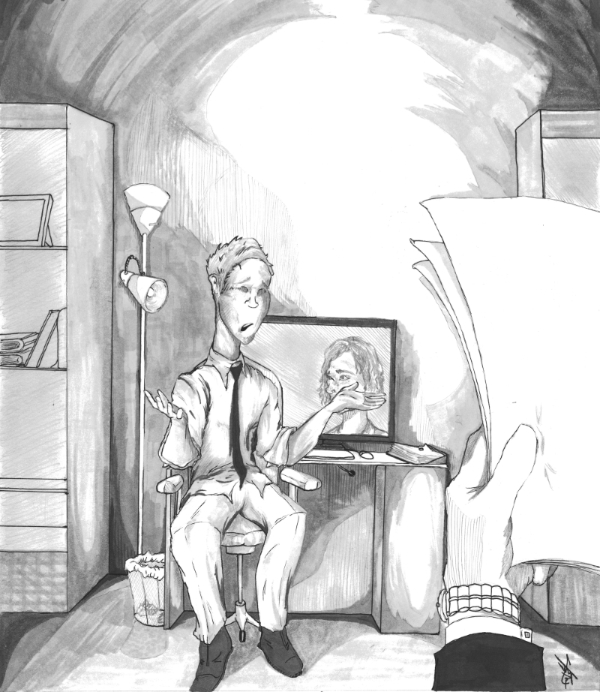
despite being allegedly untrained for the task, Miscavige declares Lisa a Clear
By October, however, the glow began to wear off. She sought more help from the church, which put her through confessionals that required her to write up her personal issues and errors. It didn't seem to help, as Lisa called an old-time friend in Dallas, Kellie Davis, and implied she was leaving Scientology and would be back in Texas soon. She called her mother days later and said she was having trouble at work. "Mother, I've let my group down," she said.
On November 15, she went to a trade show in Orlando with her
fellow employees. Her behavior there was so strange, however, that she was taken
back to Clearwater by co-worker Brenda Hubert. There, Lisa did some volunteer
work at a Christmas display, but she was still unstable.
On Saturday,
November 18, Lisa drove her Jeep Cherokee toward downtown Clearwater. Traffic
ahead of her was slowing down for a motorcycle accident. Lisa was distracted and
ran into the motor of a boat being towed ahead of her. The boat owner remembered
the hit as feeling like just a bump, but it did hurt the grill on Lisa's Jeep.
The paramedic attending the motorcycle accident noticed Lisa's accident, and
went over to check on her. “Are you ok?” “I'm fine,” replied Lisa. After some
more probing questions, the paramedic had Lisa sign a release, and she and her
partner walked back to the ambulance.
As they were preparing to
leave, the ambulance driver looked back toward Lisa's car. “Bonnie, she's taking
her clothes off.” Lisa walked down the street past the ambulance completely
naked. The paramedic jumped out and guided Lisa into the back of the ambulance
and gave her a blanket. What was she doing, the paramedic asked. “I wanted
people to think I was crazy because I need help,” Lisa replied. “I just need
someone to talk to.”
[p. 205]
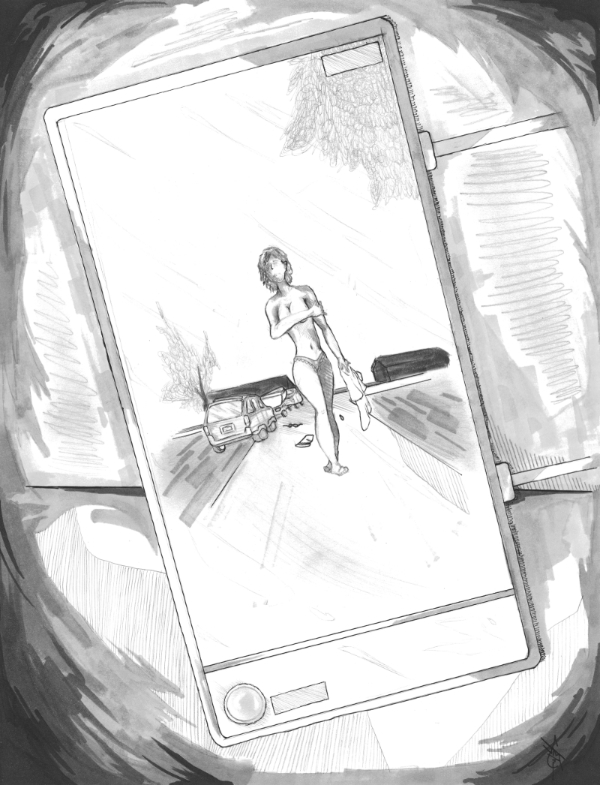
Lisa walks down the street naked. "I just need someone to talk to."
Morton Plant Hospital was nearby, so the paramedics took Lisa there to
get checked out. Orderlies at the hospital described Lisa as robotic and
distant. She was apparently not hurt physcially, but they decided she should be
admitted for observation. Out of the blue, fellow Scientologists began showing
up in the emergency room. They had been alerted by Bennetta Slaughter, Lisa's
boss. She had seen Lisa's car at the accident scene after the ambulance had
left, and asked a policeman where the owner was. He directed her to Morton
Plant. She in turn called on other Scientologists to check on Lisa because “I
was covered in paint from head to foot because I'd been working...on the props
for this particular charity drive I was doing. And...you know...I mean, I looked
awful. I had paint all over me and frankly hospitals are
not my thing.” In the
end, Scientologists Alain Kartuzinski, Judy Goldsberry-Weber, Mary DeMoss, Annie
Mora, Humberto Fontana, Dr. Jeanne DuCuypere, Emma Shamehorn, and David
Slaughter responded to the call to check on Lisa.
At the hospital,
the Scientologists stayed by Lisa, afraid that she would wind up in the hands of
psychiatry, which L. Ron Hubbard taught were essentially demons in human form.
After Lisa's physical checkup, Joe Price was called to evaluate Lisa's mental
state. He was a clinical nurse specialist with a psychiatric background, on duty
at the time. "When I went into the cubicle where Lisa was laying in bed, there
were at least three members of the church there... they thought I was a
psychologist or a psychiatrist."
[p. 3]
Price managed to have a
private chat with Lisa, but she indicated she was not being coerced by her
fellow Scientologists. In the end, a subdued Lisa stated that she wanted to
leave with her fellow parishioners, and Dr. Lovett, unable to find enough to
keep Lisa under Florida's Baker Act, reluctantly
allowed her to
sign herself
out. As she was leaving, Nurse Price thought to himself, "My God, this lady's a
prisoner." [p. 9]
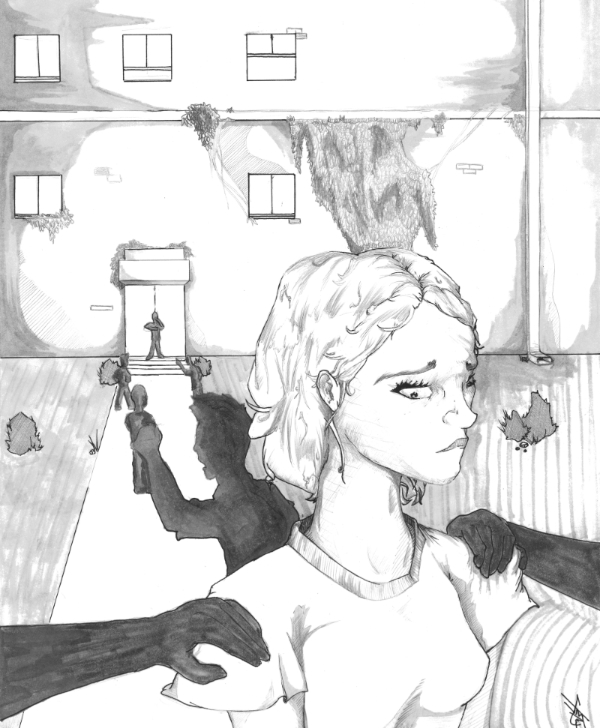
Lisa's "friends" remove her from the hospital
Alain Kartuzinski drove
Lisa to Scientology's Ft. Harrison Hotel, about 5 minutes away. Lisa was booked
into Room 174, a cabana on the ground floor in the back of the hotel.
Kartuzinski decided Lisa was a "type III" in Scientology speak, meaning she had
gone crazy. The solution was the Introspection Rundown.
II. Room 174
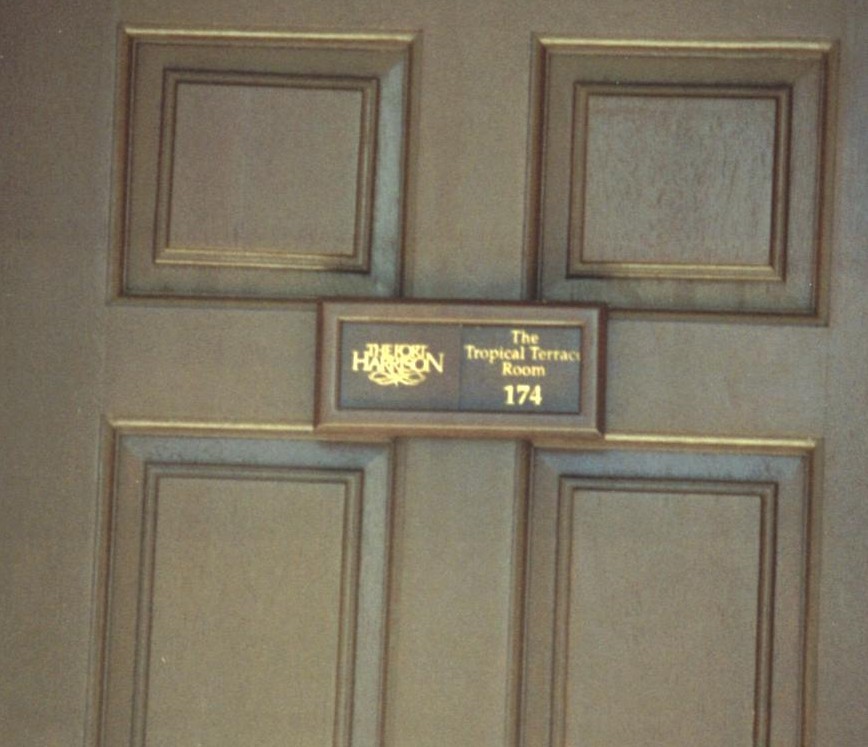
Kartuzinski, as Lisa's case supervisor, began organizing a crew to take care
of Lisa, headed by Janis Johnson. Johnson had a medical degree, but her license
had been revoked in Arizona and she never applied for one in Florida. A few
other assistants had varying degrees of medical training, but most who took
turns with Lisa had no such training. Judy Goldsberry-Weber, who was a nurse and
actually wanted to help as a friend of Lisa's, was pushed out by Johnson.
Kartuzinski ordered the watchers to write a report at the end of their shifts.
Lisa would be watched, but not spoken to, 24 hours per day. A security person
was outside her door. Now they would wait and watch for Alain to decide that
Lisa had snapped out of her mental instability. But Lisa never would.
Lisa would not make this easy. She hit people, broke things, yelled, acted
crazy, and at times tried to get away. She soiled herself, took off all her
clothes, spit out food they tried to feed her, and basically refused to
cooperate with her incarceration. But as they waited for Lisa to snap out of her
psychosis, they were her caretakers, responsible for her safety and health. This
would mean concern for her food and drink, her sleep, and her hygeine. At some
point in November, Lisa was taken to her apartment by 2 other women, perhaps to
get clothing and personal items. Fannie, Lisa's mother, recalled that the
manager at Lisa's apartment "said that two women brought her to the apartment
holding onto her and he didn't know why they was bringing her. ... her hair was
all messed up and she wasn't able to walk too well."
[p. 17]
On
November 22, one of Lisa's caretakers wrote:
“I went on this watch as
I had no senior to consult with at 2 am. I went into the room & she was total
Type III [Scientology's term for psychotic]. Blabbering, incoherent nonstop.
Shaking, no warm clothes on -- a old top & shorts & shoes -- no socks. She fell
asleep for 4 hours & got up. I finally chased her around the place 50 times &
got on slacks, tee shirt, jacket, socks & shoes -- she was like an ice cube. She
talked incoherently hour after hour. She refused to eat & spit out everything
she took. Her breathe was foul. She looked ill like measles or chicken pox on
her face. Had a fever to my touch. After 1 pm she went violent & hit me a few
times telling me she was to kill me #s of times. I called in the "guard" outside
-- the fellow an HCO staff member -- new one a Mexican gentleman. He stayed with
me during the rage -- but she still smacked me around. (I did cover & guard
myself but she was out of control). I finally got her to drink a protein shake
but she wouldn't eat or sleep any further. This lasted til 4 pm. There was no
post coverage for my library & it was very busy per Qual 1H In fact no one was
R-factored til later per the Qual 1H. I had no food, drink or sleep the whole
time. Now I'm not in uniform -- can't get back to my room; starving -- have no $
to get food, no key to my room & out of sorts from the
whole ordeal.“
On
the 5th day (November 23), Johnson came by to check on Lisa. She noticed a
bruise on Lisa's arm; "It kind of looked like a one- or two-day old bruise is
what I remember seeing. You know how it looks kind of purplish first and then it
goes to a brownish color, and you kind of tell how long it’s been by looking at
it." [p. 33] This probably came from one of Lisa's physical outbursts, where she
would hit something, like a wall or furniture.
Early in the morning
of the 24th, Lisa managed to actually talk to a fellow human being. From Janet
Reitman's book:
Sam Ghiora, a Flag security staffer, was seated on a
small bench outside of Lisa’s room when he heard a doorknob rattle. Slowly, the
door to room 174 opened, and Lisa stood at the threshold, fully dressed.
“Hey, she said calmly, walking a few steps toward him. “You’re not CMO.”
“You’re right,” Ghiora said. He was not a member of the Commodore’s Messenger
Organization but a new Flag security trainee.
“You can’t tell me what to do,”
Lisa said.
“You’re right,” Ghiora said again. He knew that he’d broken
protocol by speaking to her, but he was momentarily shocked: How had she just
walked out of the room? Where were her minders? Ghiora gently put his hand on
Lisa’s shoulder and steered her back toward her room. She stopped at the
threshold. “I just don’t know what’s happening,” she said.
Ghiora said
nothing.
“Could you help me?”
Nothing.
“I need help," she said, and
slowly entering the room, shut the door.
[pp. 218-219]
Later that day,
Security head Paul Kellerhals was called to Room 174. Lisa was acting violent.
As he walked in the room, Lisa was hitting Joan, one of the caretakers.
"And Lisa was standing in the middle of the floor with the robe on. And,
Mmm, see, I'd seen this girl several times before that and I never saw her do
anything violent. I didn't particularly expect anything violent. But before I
could -- before I could even say anything, I was going to ask her to sit on the
bed so we could sweep the glass off the floor, she had no shoes on, right, and
clean the room up, right, she hit me with her fist. I don't know if it was her
fist or her hand, but it hit me like this (indicating), she stepped forward and
whacked me one. I had a tie on. She wrapped her left hand in my tie and started
pulling the tie. And I had a pen in this pocket (indicating), this happened kind
of suddenly, and the pen came out, and while I was down like this, Joan was
standing to my right, and she said, "She has got your pen." And I looked up and
I saw the pen here (indicating), she was over there, the pen was like this
(indicating) and it was coming. And I -- that is when my attention went to the
pen, right. And at the same time I was struggling to get the pen away, Joan was
trying to unwrap my tie. And then she wound up on the bed, going backward across
the room in the struggle, she wound up on the bed and flipped over on her
stomach. And I got -- finally got the pen out of her hand, right. And I said,
"Clean the room." She was on the bed. I had my hands on her shoulders. And, I
said, "Clean the room." And I said, "Get the glass off the floor."
[pp 23-24]
On November 25th, the seventh day of Lisa's stay, Kartuzinski decided it was
time to try to sedate Lisa as she was not sleeping much and was physically
violent. David Houghton was at the Ft. Harrison studying Scientology courses
when he was asked to help with Lisa. He crushed up aspirin and Benadryl, mixed
it in with orange juice, and used a baster to inject the concoction into the
back of Lisa's throat. Lisa seemed to like the taste, so it was not much of a
fight. About an hour later, Lisa laid down to sleep.
[pp. 15-17]
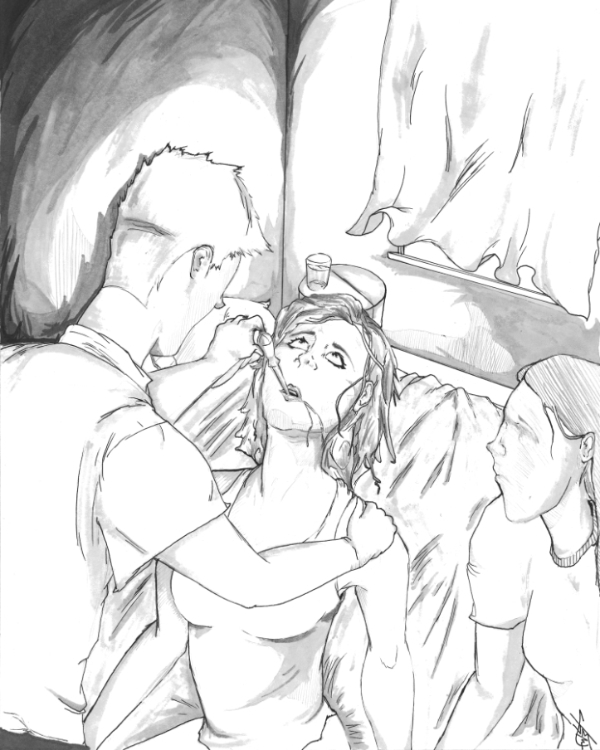
Lisa force-fed aspirin and Benadryl
Houghton was back on the 27th to
perform his specialty on Lisa, force feeding her drugs. She had still been
talking incessently, not sleeping, hitting things and people. Around this time
Rita Boykin managed to clip Lisa's deadly fingernails that she used to scratch
herself and others:
"I felt I had wanted to do it for days, because, I
mean, it was a hazard to her and us, but she wouldn't let me. You know, I
couldn't manage it, and I planned it out. Just one day I just washed her hands
really well when she was asleep. I kind of soaked them, because she would get
feces and stuff like that under her nails, and when they were real soft, I
clipped them." [p. 42]
November 28 Houghton
returned with his turkey
baster and injected liquid, Benadryl, and aspirin into Lisa's mouth. The
caretakers reported that Lisa was calming down. The assumption was she was
getting weaker.
November 29 Janis Johnson gave Lisa a shot of
magnesium. The caretakers continued with their attempts to get Lisa to eat
protein shakes, valerian root pills, Cal Mag and water. And to be clear, no
actual doctor ever saw Lisa at the Ft. Harrison Hotel. The caretakers were
basically flying blind as far as her health was concerned.
November
30, the 12th day, the caretakers reported Lisa was calmer, quieter, had lost
weight, and was regressing.
December 1 Rita Boykin reported her
attempt to force feed Lisa; "My idea of closing her nose so she has to swallow
so she can breathe through her mouth is only marginally successful. She either
swallows and breathes or she lets everything in her mouth
come out.” Lisa's
violent outbursts caused caretaker Sylvia DeLavega to curl up in a corner
crying. Janis Johnson visited and noticed Lisa was much thinner. Heather Petzold
was becoming exasperated and wrote uplines that things needed to change;
"I wrote she's continuing to scream, you know, just things over and over. She's
defecating on the bed. She's -- she doesn't walk around as much. She is sleeping
less. She -- we tried to give her protein drinks, we tried to give her like
eggs, whatever we could give her, and I haven't been able to succeed. And that
we need to change something, she's not getting better so we need to change
something." [p. 34-5]
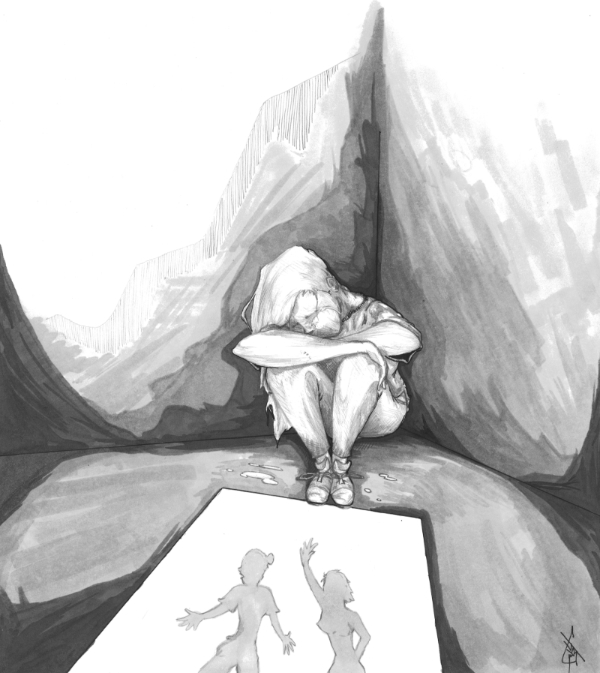
Sylvia is overwhelmed from Lisa's violence
December 2 Lisa was noticably weaker, but still struck out at her captors. Someone (Johnson?) gave her a "magnesium shot." Rita Boykin noted "She has scratches and abrasions all over her body, and on her elbows and knees she has pressure sores."
December 3, the 15th day, Lisa
was too weak to stand at this point. She slept more. She was incontinent. Still,
her bumbling caretakers went blindly forward, following the Ivory Tower advices
from Kartuzinski and the infrequent visits from Johnson.
December 4 Johnson came by but
saw Lisa sleeping so she left. Lisa was visibly weaker and refusing to eat.
Heather Hoff made note of Lisa's bruises all over, and Rita Boykin wrote that
Lisa had a swollen jaw.
By December 5 some 20 people had
helped with Lisa's watch
[p. 11].
That afternoon Laura Arrunada and Heather Hoff were bathing Lisa when her
sphincter relaxed. Laura's medical training told her this could be a sign that
Lisa needed medical care right now. She contacted Johnson about her fears. About
2 hours later, Johnson came by to check. Johnson considered that Lisa was
severely dehydrated and might be septic. She went to call
Dr. Minkoff, a
fellow Scientologist who had previously prescribed drugs for Lisa without seeing
her. Minkoff was on duty at New Port Richey hospital, about 45 minutes away.
Morton Plant hospital was 5 minutes away. Minkoff listened to Johnson's severely
insufficient description of Lisa and told her to bring Lisa to him [Minkoff
would later have his license suspended
for prescribing medication for Lisa without having seen her].
Johnson went to get her car,
while Paul Greenwood, a security staff, came to the room to help. Greenwood held
Lisa under her arms as Laura lifted her by her feet. They put Lisa in the middle
of the back seat and got in themselves. Janis Johnson drove, passing three other
emergency rooms before arriving at New Port Richey. As they got closer to the
hospital, Lisa's breathing and pulse became weaker and weaker.
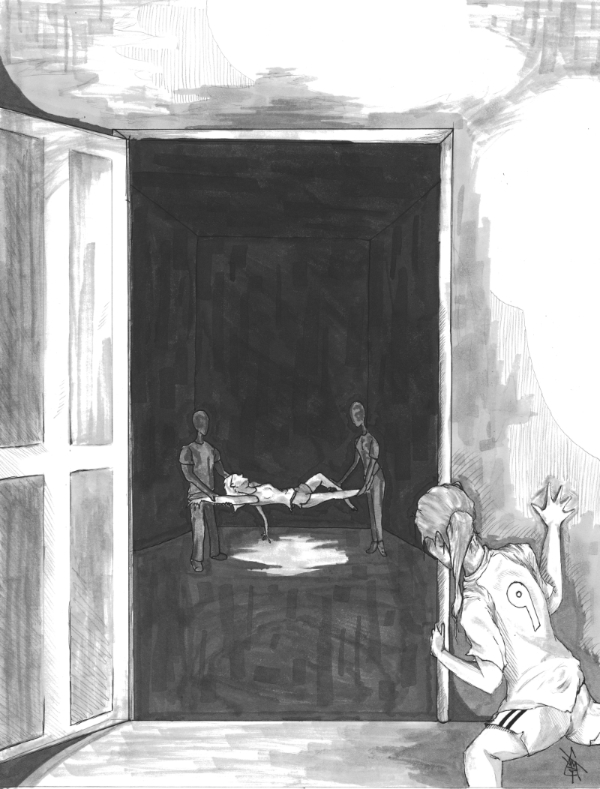
Janis returns with the car as Lisa is carried out of Room 174
At the hospital, some nurses came
out with a wheelchair to help. Nurse Rick Pemberton recalled:
"they needed help getting this person out of the car. And immediately looking at her, I suspected that things weren't so good because she was very pale. Her eyes had this really hazy look to them and she wasn't breathing. So we immediately rushed her back to Room 2, which is our CPR room. And we then initiated CPR at that time... There's no question in my mind now that she was definitely [dead] before she ever got here." [p. 4]
Dr. Minkoff arrived and put an IV
in her leg. Another doctor arrived and intubated her. Nothing worked, and Dr.
Minkoff pronounced Lisa McPherson dead.
A nurse who saw Lisa contacted
the police over the unusual circumstances and the appearance of Lisa's body.
Clearwater police began an investigation the next day.
III. Search for the Truth
Scientologists immediately
started work on a "shore story" to cover what actually happened to Lisa. Her
room was cleaned and the beds replaced with a single king-sized bed. Staff
involved were kept in one location, as a precaution to the initial theory that
Lisa might have had a severe contagious disease.
Marty Rathbun, a high church official at the time, was tasked with handling
the debacle. He gathered any paperwork about Lisa, including her auditing
folders, and sent most to headquarters in Los Angeles, where David Miscavige
was. The reports from Lisa's last 3 days, however, he handled differently. "I
said, 'Lose 'em,' and walked
out of the room." They have never been found.
Three Scientologists involved
with Lisa's care quickly left the country; Susanne Schnurrenberger, Laura
Arrunada, and Ildiko Cannovas.
Scientology's shore story was to
be that Lisa came voluntarily to the Ft. Harrison Hotel for "rest and
relaxation" after becoming stressed out. At the hotel, people would occasionally
check in to make sure Lisa was doing ok. On the last day Lisa suddenly fell ill
of fast acting meningitis. Lisa was taken to see Dr. Minkoff by her request as
she knew he was a Scientologist. And if not for the following police and
newspaper investigations, this is the story we would know today.
On December 6 police came to the
Fort Harrison Hotel to investigate and found a completely cleaned and
re-furbished Room 174. It had one king-size bed instead of the 2 queen beds when
Lisa was held captive there. The interviews with witnesses, including Alain
Kartuzinski, followed the shore story to the letter. But police had a
36-year-old's body
that clearly showed something very peculiar had been going on. Autopsy photos
show bruises and scars all over Lisa's body. The paramedics in her November 18
car accident guessed she weighed about 140 pounds, yet Lisa's body on December 5
was 108 pounds. Lisa's
caretakers had not called an ambulance, but instead drove themselves past 4
other emergency rooms to get to New Port Richey hospital, by which time Lisa was
already apparently dead. There was too much strangeness to just accept
Scientology's side of the story. So while Scientology worked feverishly to push
their version of Lisa's demise, the police began to search for what really
happened. Police sought
information from Scientology.
Bennetta Slaughter, Lisa's
employer, called Fannie, Lisa's mom. "Benetta called me around 2:00 the next day
to tell me that she had died. And I asked her what in the world happened. And
she said well, she started getting sick about noon and just kept getting sicker
and sicker. And they took her on to the doctor ... the hospital."
[p. 5] There
was no mention of the accident, or the Introspection Rundown, or the guards at
the hotel door, or the 24/7 caretakers. Further questioning produced no more
information, so on December 16 Fannie and her two sisters flew to Clearwater to
get answers and collect Lisa's things. When they arrived outside Lisa's
apartment, her roommate and others were hauling things out. Fannie went in to
collect what she could, but Lisa's furniture, clothing, jewelry, and most
everything was already gone. The police and Lisa's friends were not helpful in
relieving Fannie's suspicions.
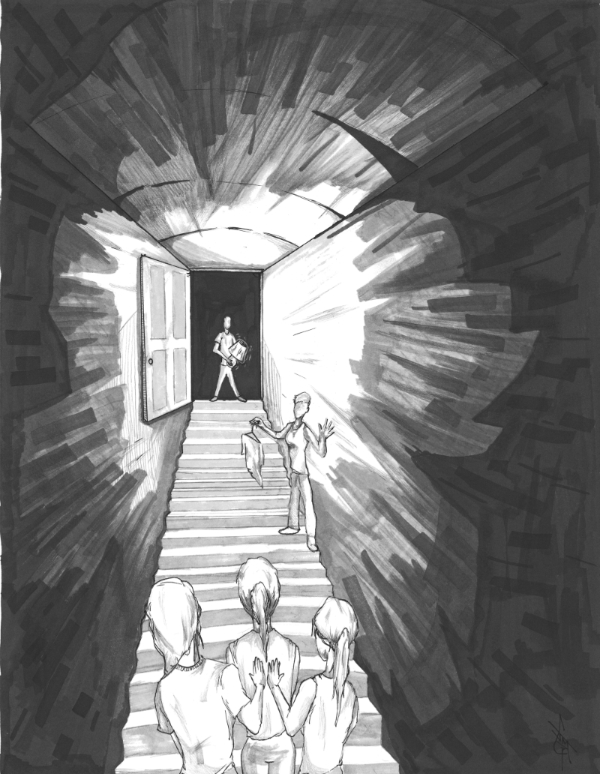
Fannie and her sisters arrive at Lisa's apartment
Coincidentally, some
anti-Scientology activists were
planning a protest in Clearwater for March 1996.
As they had been talking to the police to make sure their plans would be
compliant with city ordinances and such, a detective mentioned something on the
police department's web site.
This was a page named "homicide.html" that listed information about active death
investigations. Lisa McPherson's case was shown there, with her "last known
address" as 210 S. Fort Harrison in Clearwater, being the Ft. Harrison Hotel. So
while no protester knew who Lisa was, many knew that address as the very
location they planned to protest at. The protest organizer gave Cheryl Waldrip,
a reporter at the Tampa Tribune, information about their coming protest and
included a link to the police department's web site about Lisa McPherson,
indicating the address's connection to Scientology.
Waldrip at first did not think
much of this death investigation until she noticed there had been no obituary
for Lisa in the local papers. She contacted Lisa's family. On December 15, 1996
the front page of the Tampa Tribune carried the headline
"Mystery Surrounds
Scientologist's Death." Scientology's shore story was quickly unraveling.
Scientology put out a
press release
the next day giving their version of Lisa's death.
In February, 1997 Lisa's family
sued the Church of Scientology for wrongful death. Attorney
Ken Dandar got a court order in July
1997 ordering the church to turn over all
caretaker logs.
Scientology's internal document of 1997 again gives
their version of Lisa's death.
On November 13, 1998 the State of
Florida charged Scientology's Flag Services Organization with abuse of a disabled
adult and practicing medicine without a license. These weak charges came after a
full-court press by Scientology's lawyers and propagandists to stifle any
criminal charges against any Scientologist or entity.
After they learned of Lisa's
story, protesters switched their annual Clearwater protest date from around
Hubbard's birthday in March to around December 5, the day Lisa McPherson died.
They held candle light vigils for
Lisa near the Ft. Harrison Hotel. At one of these vigils, hundreds of
Scientologists came out to harass the mourners, even
blowing out their candles. Critics
set up memorial web sites for Lisa and began archiving any information about
her.
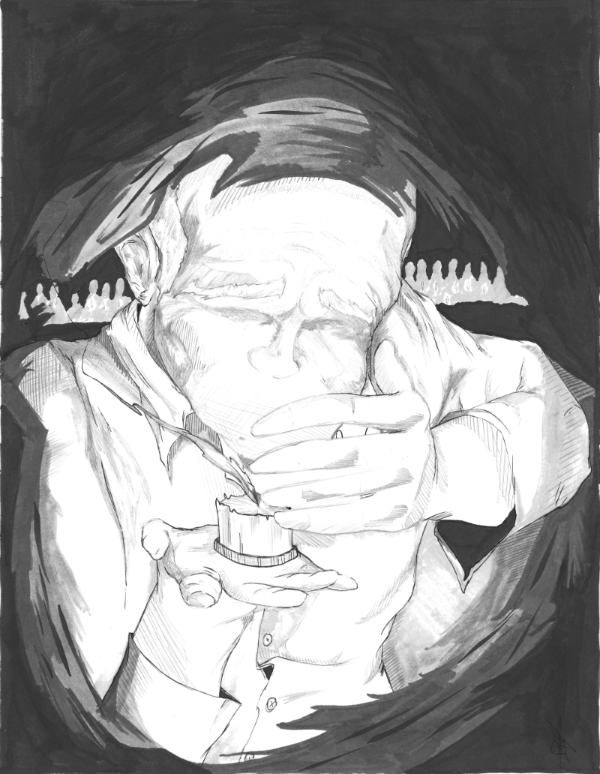
Scientologists blew out mourners' candles
In 1999 the
Lisa
McPherson Trust opened just blocks away from the Ft. Harrison Hotel. The mission
statement of the Trust was to "expose the abusive and deceptive practices of the
Church of Scientology and to help those who have been victimized by it. These
were the final wishes of Lisa McPherson's mother, Fannie, who died before the
Church of Scientology was held to account for Lisa's death."
In 2001 Dr.
David I. Minkoff's medical license was
suspended for a year for prescribing
medicine to Lisa without even having seen her.
All of this appeared
to be a huge body blow to the cult, as it should have been. But in the end,
Lisa's family settled out of court, the state
dropped its charges (after
Scientology allegedly spent
$30 million on the case), annual protests stopped
after 2000, and the Trust disbanded in 2001. But the truth about Lisa's death
has been exposed. The heinous actions of the cult showed the dark side of
Scientology that so much wants only to display power and infallibility.
After the criminal charges were dropped, the St. Petersburg Times reported that cult leader David Miscavige had offered the state a deal to end the criminal charges:
"Drop the charges, David Miscavige told State Attorney Bernie McCabe in November 1998, and the church would make a $500,000 donation to the county's EMS system.
It also would pay the nearly $200,000 in expenses incurred in what then was a three-year investigation into Lisa McPherson's 1995 death while in the care of her fellow Scientologists.
In addition, Miscavige offered to pay the $15,000 the church would have been fined if convicted of the charges.
He also promised steps to ensure a death like McPherson's never occurred
again. The church would submit to temporary monitoring under a 'pretrial
intervention program.' It would have a doctor on call 24 hours a day at
Scientology's Clearwater operation. And it would establish a protocol with
local hospitals that detailed how Scientologists with mental problems should
be cared for in light of Scientology's vigorous opposition to psychiatry."
The state rejected the offer.
Unfortunately, Scientology has not changed. There have been accusations
since Lisa's death that Scientology has
held others against their will.
Scientology now makes prospective members sign what critics call the
Lisa
Clause, which absolves the cult of any responsibility should they decide a
parishioner needs the Introspection Rundown. Lynn Farny was interviewed by state
attorney investigators. Lynn is Legal Affairs Director for the Church of
Scientology International. He was asked if any church policies changed after
Lisa's death:
Q. What's the new Church policy on handling of violent
PTS-IIIs?
A. The policy hasn't changed.
Q. So you're still going to handle
somebody like Lisa, who's violent and breaking things and crashing, and you're
going to still do destimulation?
A. The technology is always been to get them
-- get them to sleep, get them quiet, get an immediate physical examination. And
once they're -- once they're rested and come out of it, get them audited. That
policy hasn't changed.
[p. 81]
[NOTE: another suspicious death in Clearwater, and her estate is now suing Scientology, 2024]

